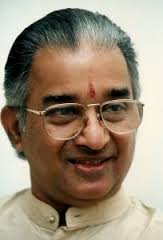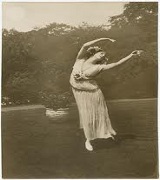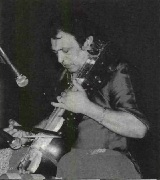Opinion Column

A Rich Art Made Poor - On Current Trends of Kathakali
by V.P. Dhananjayan
What we quite often see now during the performance is a wishy- washy marking of the steps. Certain technical norms such as the ardhamandala (half-seated) position, vattamvekkal (placing of the feet), kuttukaal and parundukaal (pada bhedas), errattivattam (adavu patterns), etc., are often not executed on the stage with precision. Each mudra is supposed to be held in certain \'sthanakam\' (posture) and \'mandalasthana\' (position) and there is a prescribed procedure for arriving at a particular gesture. All this is ignored in Kathakali presentations of today. I am not able to assess whether this is due to lack of training, or to lack of attention or total indifference to the stylisation.
Special Feature

Devadasi-s In Tights And Ballet Slippers, What?
Well, dance aficionados in the West may well have heard of bayaderes, but when Dandre and Pavlova themselves had visited India in 1922 and again in 1929, all their efforts to track down a single bayadere were to no avail. Which provoked Pavlova to pronounce: \"There are no schools of dancing in India and it is an art in which no one is interested.\" But that did not deter some of the most distinguished names in classical ballet— choreographers, composers, story writers, decor designers— to conjure up their own image of the bayaderes and present this on stage. The prime movers in this were French, Italian and Russian masters. The narratives they dreamed up were impossible, but that only shows how keen they were on anyhow giving expression to a subject that had both excited and intrigued them. The word bayadere is derived from the Portuguese \'bailadeira\', meaning ballet dance, and was coined to connote a Hindu temple dancing girl— the devadasi.
Main Feature

Main Profile - Angamali Jose
Angamali is a tiny village in Kerala, close to Kaladi, the village sanctified by the birth of Sankara Bhagavadpada. Most of the inhabitants of Angamali are Christians. Jose\'s father Jacob belonged to a middle class family. The music of neither the church organ nor the church choir caught his imagination. He developed an interest, instead, in learning Carnatic music, although none in his family had until then shown a capacity even to enjoy that music. Pursuing his interest and despite murmurs of disapproval, he went to Tiruvanantapuram and became a student of Narayana Bhagavatar, who could count Parur Sundaram Iyer, the first of the number of excellent violinists from Parur, among his disciples. Within a short period Jacob obtained impressive skills in singing and violin-playing. But then the circumstances of his family which was supporting him financially turned unfavourable and he had to find a job and earn a living. His studies with Narayana Bhagavatar were interrupted, even as his dream of becoming a professional musician was shattered. In the event he took up a clerical job. Sign in and sign out, and drudgery all day. Nothing to sing about.


